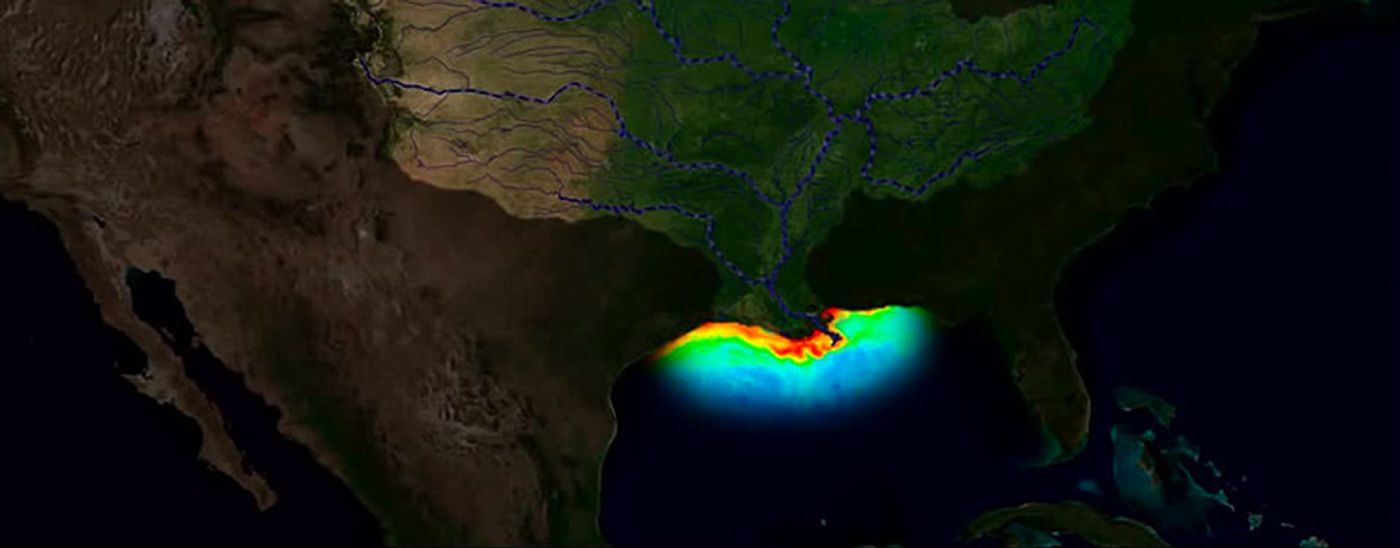The Annual Gulf of Mexico Dead Zone Forecast to be the Size of Massachusetts
According to a news release from The National Oceanic and Atmospheric Association (NOAA), this summer’s hypoxic zone in the Gulf of Mexico will be approximately the size of Massachusetts—covering 8,717 square miles (22,557 km2) of the continental shelf off Louisiana and Texas. If a significant tropical storm occurs, the zone will be 70% smaller than the predicted size. Scientists from the Louisiana State University Department of Oceanography and Coastal Sciences—Nancy Rabalais and Eugene Turner—prepare this forecast each year.
A hypoxic zone, commonly referred to as a “dead zone,” is an area of low to no oxygen concentration in ocean waters—typically less than two parts per million—which can no longer support living organisms. Hypoxic events can occur naturally in marine habitats worldwide, but seem to be happening much more frequently in shallow coastal and estuarine areas as a result of human activities.
In this region of the Gulf of Mexico, the annually recurring hypoxic zone is caused by excess nutrient pollution throughout the Mississippi River watershed due to agriculture and urbanization—also technically known as eutrophication. When the rain washes excess nutrients such as phosphorous or nitrogen into surrounding waters, they eventually reach the ocean leading to massive blooms of microscopic algae. When these algae decompose they consume oxygen, depleting resources for the rest of the surrounding marine life and creating a “dead zone.”
LSU ocean ecologist Nancy Rabalais told National Geographic that “when the oxygen is below two parts per million, any shrimp, crabs, and fish that can swim away will swim away. The animals in the sediment [that can’t swim away] can be close to annihilation.” Shrimp in hypoxic waters may have their growth stunted, which can impact Gulf Coast shrimpers by lowering the price of shrimp and their profits.
According to a press release from LSU, this particular hypoxic zone in the Gulf of Mexico started to appear 50 years ago when agriculture production in the Midwest increased. This hypoxic zone is also the second-largest human-caused coastal hypoxic area worldwide.
NOAA believes that this year’s dead zone is significant because of “the abnormally high amount of spring rainfall in many parts of the Mississippi River watershed, which led to record high river flows and much larger nutrient loading to the Gulf of Mexico.” Discharge in the Mississippi and Atchafalaya rivers was 67% higher than average this past May, resulting in nitrate loads 18% higher than average and phosphorus loads 48% higher than average.
Sources: NOAA, LSU, Gulf Hypoxia, National Geographic









